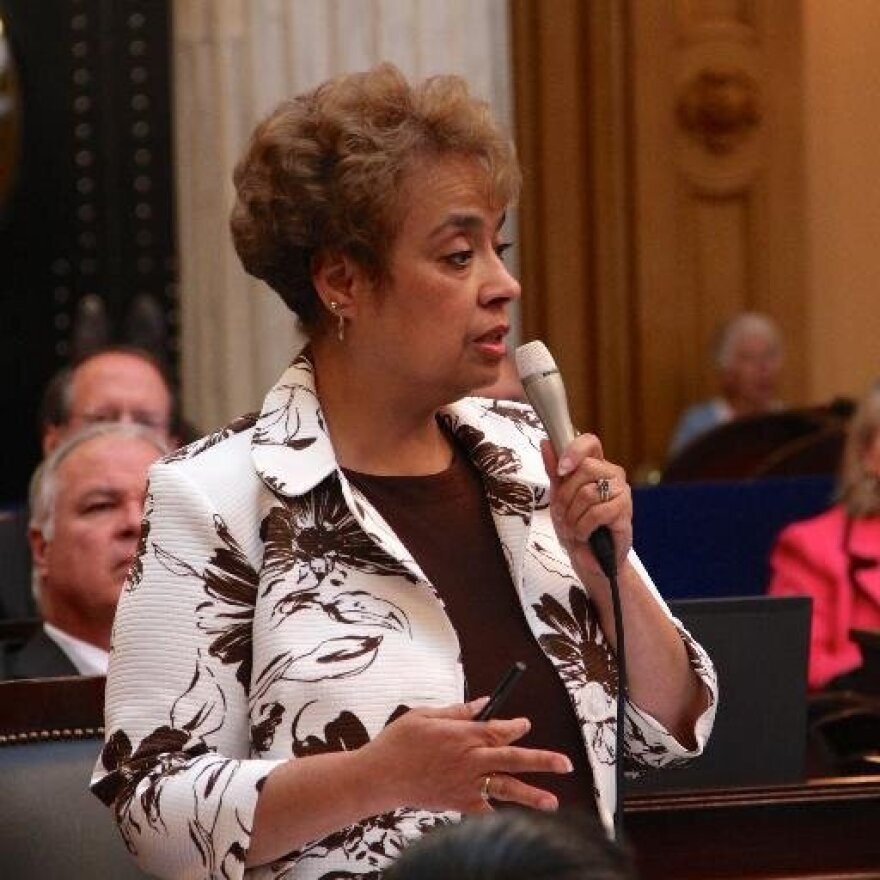Two Republican state lawmakers and a Democratic Senate staffer have resigned in the last month – all over what’s been termed “inappropriate behavior." This raises the question of whether there is a culture at the Statehouse that attracts or encourages behavior that makes people feel uncomfortable or afraid.
Back in the 1980’s, Mary Anne Sharkey left a job as a reporter at the Dayton Journal Herald to become a Statehouse reporter. She says she quickly discovered there was a ‘good old boy’ culture throughout the state capital and was shocked at what she discovered.
“When I first came there, the press room was really more like a locker room. There were nude photos hanging on the walls above reporters’ cubicles. There was a box full of Playboys and Penthouses and the whole place was a bit of a culture shock for me because even though I came from a newsroom, I had never felt anything quite like that.”
Blatant sexuality
'We would always joke that these were married men who came to Columbus to get away from their wives.'
Sharkey was one of only a handful of female reporters in what had been a man’s world. She knew the male reporters hung out at bars across the street from the Statehouse where she didn’t feel welcome. She says a hint of sex was everywhere.
“It was extremely blatant. Very blatant. ... I used to always joke about, 'Where’s the runway for the aides?' because they would have all of these young, beautiful aides working for these legislators who would go over there and meet them at the bar at night.
"And some of them were known to use the hotel rooms at the Neil House. It was very blatant. There were very few women in the legislature at the time and there were very few women reporters at the time. So we would always joke that these were married men who came to Columbus to get away from their wives.”
Changing culture
It's important to note that not all male legislators or reporters engaged in bad behavior. Sharkey says she saw the culture beginning to change in the 90’s, around the time she went from being a reporter to working for Republican Gov. Bob Taft.

Charleta Tavares was working at the Statehouse back in those days, too, first as a legislative aide. In 1994, she was elected as a Democratic state representative from Columbus and became the first ever African American woman to hold a leadership role in the Legislature. She’s now a state senator.
'We are going to make sure anybody who comes into the facilities, that they are safe as well.'
Tavares says the Statehouse is still a male-dominated culture. Last week, she wrote an open letter, saying what current leaders have done is not enough to change attitudes and behavior.
“It spoke to coming together as women to ensure we have a culture of safety here in the General Assembly, that we are going to protect the women within our organization and that we are going to make sure anybody who comes into the facilities, that they are safe as well.”
Still hesitant and partisan divides
Tavares says while the more than 30 women who signed her letter are Democrats, her effort is not partisan. And she asked Republican women in the Legislature to sign the letter.
“We opened it to all women. We had some Republican staff that initially added their name and then later took their name off.”
Tavares says she’s not sure why they removed their names. But at this point, none of the 10 Republican women representatives or the three Republican women senators or their staffers have signed the letter.
It’s not just the culture but the way it is often spun when problems are identified.
A catch-all phrase
Both Tavares and Sharkey say they don’t like the way the term “inappropriate behavior” is now being used as a catch-all.
It’s being used to describe behavior ranging from the sexual harassment and the predatory behavior that former Republican Sen. Cliff Hite has been accused of -- and apologized for -- to the off-color comment Republican Rep. Mike Henne admitted he made.
It's also been applied to whatever led to the resignation of Senate Democratic Caucus Chief of Staff Mike Premo. And it was used to describe the conduct of former Republican Rep. Wes Goodman in his office with another man, which led to Goodman’s resignation.
Shades of gray
Sharkey says it’s important for the public to know if the behavior being sanctioned crossed the line from insulting to intimidating or worse.
'Clearly the line is drawn when someone either physically attacks somebody or physically harasses someone to the point where they feel like they have to leave their job or they feel like their job is threatened.'
"There’s a big difference between making an inappropriate joke or inappropriate comment and actually acting on it.”
Tavares says she thinks leaders handling these situations need to provide information to protect the public, but she says they also need to make sure not to reveal too much.
“You don’t want so much detail given out so you can pinpoint who that individual was.”
That’s something she says happened in at least one of these recent cases.
Women in the Statehouse are outnumbered in the Legislature and the press corps that covers lawmakers. But there is one place where women outnumber men. There are more female legislative aides and staffers.





